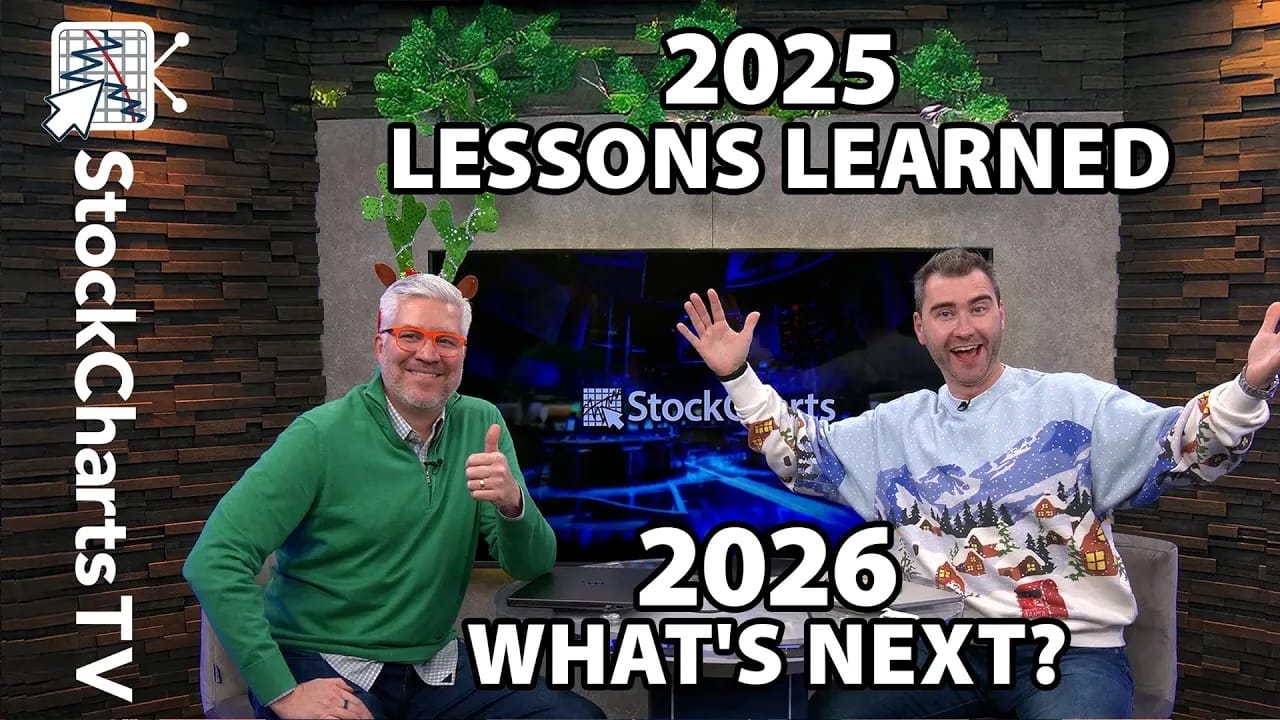RISING RATES RATTLE STOCKS -- 10-YEAR YIELD EXCEEDS 5% - UTILITIES LEAD THE WAY LOWER -- S&P 500 CORRECTION TARGETS -- FINANCE SPDR GETS HIT -- BAC BREAKS TRIANGLE SUPPORT -- HOMEBUILDER ETF BREAKS DOWN -- USING ETFS TO MEASURE INFLATION FEARS
RATE FEARS SINK STOCKS... Today's Market Message was written by Arthur Hill. - Editor
Stocks declined sharply on Thursday as interest rate worries hit home. The 10-year T-Note Yield ($TNX) surged above 5% for the first time since July 2006. All of the major indices were down over 1.5% and the S&P MidCap Index led the way lower with a 2.10% loss. All of the major sectors were sharply lower with the interest rate sensitive Utility SPDR (XLU) losing over 3%. If there was a baby in this bath water, then it was certainly thrown out today. The decline over the last four days was the sharpest since late February and it looks like a correction is under way.

Chart 1

Chart 2

Chart 3
S&P 500 CORRECTION TARGETS... The S&P 500 hit a seven year high just last week and the long-term trend remains up. Despite this week's decline, it is still too early to label the long-term trend down. As long as the long-term trend remains up, declines are viewed as corrections and I would like to review some techniques for estimating downside targets. The first target would be based on broken resistance around 1460. Broken resistance turns into support and securities often return to their breakouts. The second target would be based on key retracements. The key Fibonacci retracements are 38% (.382) and 62% (.618). Dow Theory often uses 50% as a typical retracement level and this is in the middle of the Fibonacci retracements. Using these levels, the potential retracement zone (38% to 62%) extends from 1435 to 1475. The third target stems from the Jul-06 trendline, which extends up to around 1460 in early August. The Jul-06 trendline, broken resistance and the 50% retracement mark all point to the 1460 area and this is the downside target for a correction.

Chart 4

Chart 5
XLF BREAKS 50-DAY... John Murphy and I noted relative weakness in the Finance sector and this interest rate sensitive group took it on the chin today. The finance sector is the single biggest sector in the S&P 500 and weakness is noteworthy. The Finance SPDR (XLF) surged to resistance from its February high, but stalled throughout May and never broke this important resistance level. The inability to breakout showed relative weakness and this was a concern throughout May. This concern turned into outright bearishness as the ETF gapped down on Wednesday and broke its 50-day moving average today. The next support line is the 200-day moving average around 36.

Chart 6
BAC BREAKS TRIANGLE SUPPORT... Bank of America (BAC) is part of the Finance SPDR (XLF), but this stock did not even come close to its February high. BAC was lagging both the S&P 500 and the Finance sector. The stock stalled throughout April and May by forming a large triangle. The 50-day moving average crossed below the 200-day in the process and the stock broke triangle support with a sharp decline today. This break signals a continuation lower and a move below the March low is expected.

Chart 7
HOMEBUILDERS EXTEND BREAK DOWN... While XLF actually hit resistance from its February highs, the Homebuilders SPDR (XHB) never even came close to its February high and has underperformed the broader market the whole year. The ETF declined sharply in February-March and then bounced in April-May. This bounce looks like a classic corrective rally. The move retraced 62% of the Feb-Mar decline and traced out a rising wedge. Both the pattern and the retracement are typical for corrective rallies. 62% stems from the Golden Ratio (.618) and this is a Fibonacci number. XHB peaked in late May and broke the lower wedge trendline this week. The ETF had some support at 33.5 from the May lows, but this level fell today and the break down signals a continuation of the Feb-Mar decline. The downside target is to the upper 20s.

Chart 8
EVIDENCE OF INFLATION WITH ETFS... The iShares Lehman TIPS Bond Fund (TIP) is made up of inflation-protected long-term bonds while the iShares ~20-year T-Bond Fund (TLT) is just a normal long-term bond fund. This makes TLT more vulnerable to rising inflation. Bonds loathe inflation because it translates into higher interest rates and higher interest rates translate into lower bond prices. The iShares Lehman TIPS Bond Fund (TIP) and inflation-protected bonds offer some security when inflation heats up and should hold up better than normal bonds.

Chart 9

Chart 10
The performance of the iShares Lehman TIPS Bond Fund (TIP) relative to the iShares ~20-year T-Bond Fund (TLT) can shed some light on inflation fears. As noted above, TIP should outperform when inflation fears are rising and TLT should outperform when inflation fears are subsiding. The chart below shows that TIP is outperforming TLT and this means that inflation fears are rising. The TIP/TLT ratio broke resistance at the end of May and TIP is clearly outperforming TLT. This means inflation fears are rising and this is generally bearish for bonds.

Chart 11










